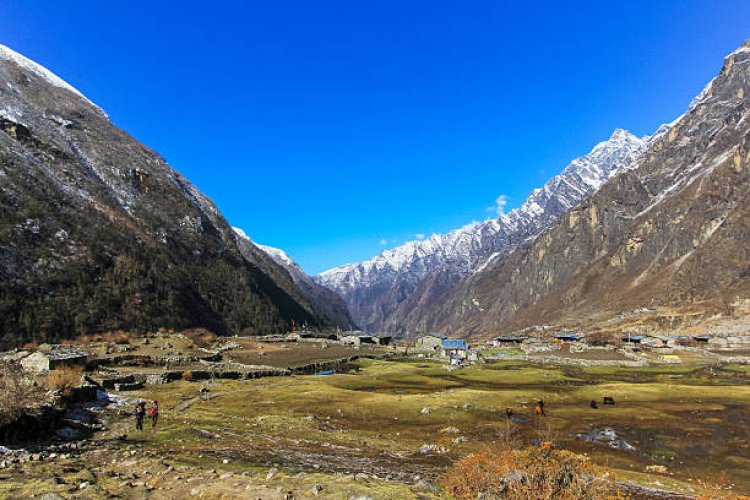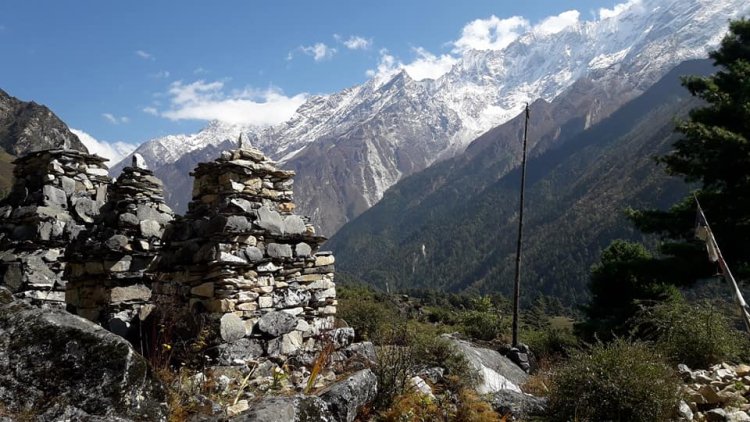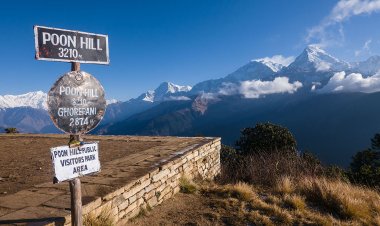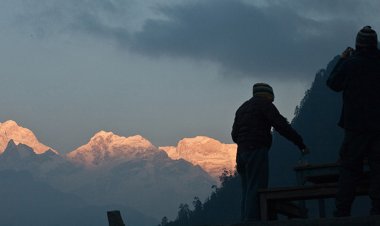Exploring the Beauty of Langtang Trek: A Himalayan Adventure
Nepal, a country nestled in the heart of the Himalayas, is a haven for trekkers and adventure enthusiasts. Among its many awe-inspiring trekking routes, the Langtang Valley Trek stands out as a mesmerizing journey through breathtaking landscapes, rich culture, and unparalleled natural beauty.
Introduction to Langtang Valley
Geography and Location
Langtang Valley is situated to the north of Kathmandu, the capital city of Nepal. It is sandwiched between the main Himalayan range to the north and a slightly lower range of snowy peaks to the south. This region is renowned for its stunning alpine scenery, diverse flora and fauna, and the warm hospitality of the local Tamang communities.
Trekking Route Overview
The Langtang Valley Trek typically begins in Syabrubesi, a charming village with a mix of traditional and modern elements. From here, trekkers embark on a journey that takes them through dense forests, terraced fields, and picturesque villages like Lama Hotel and Langtang Village, ultimately reaching the spectacular Kyanjin Gompa.
Unique Features of Langtang Valley Trek
Breathtaking Landscapes
The trek offers a diverse range of landscapes, from lush forests of rhododendron and bamboo to alpine meadows adorned with vibrant wildflowers. As trekkers ascend, the scenery transforms into a snowy wonderland, providing panoramic views of towering peaks.
Rich Biodiversity
Langtang National Park, through which the trek passes, is home to a variety of wildlife, including red pandas, Himalayan tahr, langur monkeys, and numerous species of birds. The park's biodiversity adds an extra layer of excitement to the trek, as every turn in the trail brings the possibility of encountering unique flora and fauna.
Cultural Immersion
The trek also offers a glimpse into the rich cultural heritage of the region. The predominantly Tamang inhabitants have preserved their unique traditions and lifestyle for centuries. Trekkers often have the opportunity to visit local monasteries, interact with the friendly locals, and participate in traditional rituals.
Practical Information for Trekkers
Best Time to Trek
The ideal time to undertake the Langtang Valley Trek is during the spring (March to May) and autumn (September to November) seasons. During these periods, the weather is relatively stable, and the clear skies provide unobstructed views of the surrounding peaks.
Difficulty Level
The trek is considered moderate in terms of difficulty, making it suitable for trekkers with a reasonable level of fitness. However, altitude-related challenges can still pose a risk, and acclimatization is crucial to ensure a safe and enjoyable trekking experience.
Permits and Regulations
Trekkers are required to obtain the Langtang National Park entry permit and the TIMS (Trekkers' Information Management System) card before embarking on the journey. These permits not only help in regulating tourism but also contribute to the conservation of the region's natural and cultural treasures.
Personal Experiences and Testimonials
The Langtang Valley Trek has left an indelible mark on the hearts of many trekkers. Stories of awe-inspiring landscapes, warm encounters with locals, and a profound sense of accomplishment echo through the personal experiences shared by those who have ventured into this Himalayan gem.
"The Langtang Valley Trek was more than just a physical journey; it was a spiritual awakening. The beauty of the mountains, the kindness of the people, and the serenity of the monasteries made it an unforgettable experience." - Emily, USA.
"I was initially drawn to Langtang for its natural wonders, but it was the cultural immersion that made the trek truly special. Sharing a meal with a Tamang family and joining their dance around the fire is a memory I'll cherish forever." - Raj, India.
Responsible Tourism and Conservation Efforts
The increasing popularity of trekking destinations like Langtang Valley brings with it the responsibility to preserve the fragile ecosystems and support local communities. Various initiatives and organizations are working towards sustainable tourism practices, ensuring that future generations can also revel in the pristine beauty of the region.
Conclusion
The Langtang Valley Trek is not just a trek; it's a transformative journey that offers a perfect blend of adventure, culture, and natural splendor. As trekkers traverse its trails, they are not only treated to panoramic mountain views but also become part of a story that has been unfolding in the Himalayas for centuries. The Langtang Valley, with its majestic landscapes and vibrant culture, beckons adventurers to explore its wonders and leave with memories that last a lifetime.
Frequently Asked Questions (FAQ):
-
When is the best time to undertake the Langtang Valley trek?
The best time for the Langtang Valley trek is during the spring (March to May) and autumn (September to November) seasons. During these periods, the weather is generally stable, and the views of the Himalayan peaks are at their finest. -
What is the level of difficulty for the Langtang trek?
The Langtang Valley trek is considered moderate in difficulty. While it doesn't involve extreme altitudes like some other treks in the region, proper acclimatization is crucial. Trekkers should be in good physical condition and adequately prepared for variable weather conditions. -
How is the accommodation along the trekking route?
The trekking route offers a range of accommodation options, from basic teahouses to more comfortable lodges in places like Kyanjin Gompa. Accommodations are simple but cozy, providing trekkers with a place to rest and rejuvenate after a day of trekking. -
What permits are required for the Langtang Valley trek?
Trekkers need a Langtang National Park entry permit, which can be obtained in Kathmandu. Additionally, a TIMS (Trekkers' Information Management System) card is required. These permits are usually arranged by trekking agencies or can be obtained at the respective counters in Kathmandu. -
Is it possible to do the Langtang trek independently, or is a guide recommended?
While it is possible to trek Langtang independently, hiring a guide is recommended for a more enriching experience. Guides are familiar with the terrain, culture, and can assist in case of emergencies. They also add a cultural dimension to the trek by providing insights into local customs and traditions. -
Are there ATM facilities along the Langtang trekking route?
ATM facilities are not available along the trekking route. It's advisable to carry enough Nepalese currency (Rupees) from Kathmandu. Some lodges may accept credit cards, but it's always wise to have cash on hand. -
How do I prepare for altitude sickness during the Langtang trek?
Proper acclimatization is crucial to prevent altitude sickness. It's recommended to ascend gradually, stay hydrated, and listen to your body. If symptoms like headache or dizziness occur, it's essential to descend to a lower altitude. -
What should I pack for the Langtang Valley trek?
Packing essentials include trekking boots, warm clothing, a good quality backpack, a sleeping bag, and a first aid kit. It's crucial to pack layers to accommodate changing weather conditions. A comprehensive packing list is usually provided by trekking agencies. -
Can I extend the Langtang trek to other nearby regions?
Yes, there are extension options like the Langtang Gosainkunda trek or the Helambu trek, allowing trekkers to explore more of the Langtang region and its diverse landscapes. -
How do I book a Langtang trekking package with a tourism agency?
Booking a Langtang trekking package with a tourism agency can be done online through their websites or by contacting them via email. Ensure that the agency is reputable, has positive reviews, and offers the services you require for a seamless trekking experience.
What's Your Reaction?






































































































